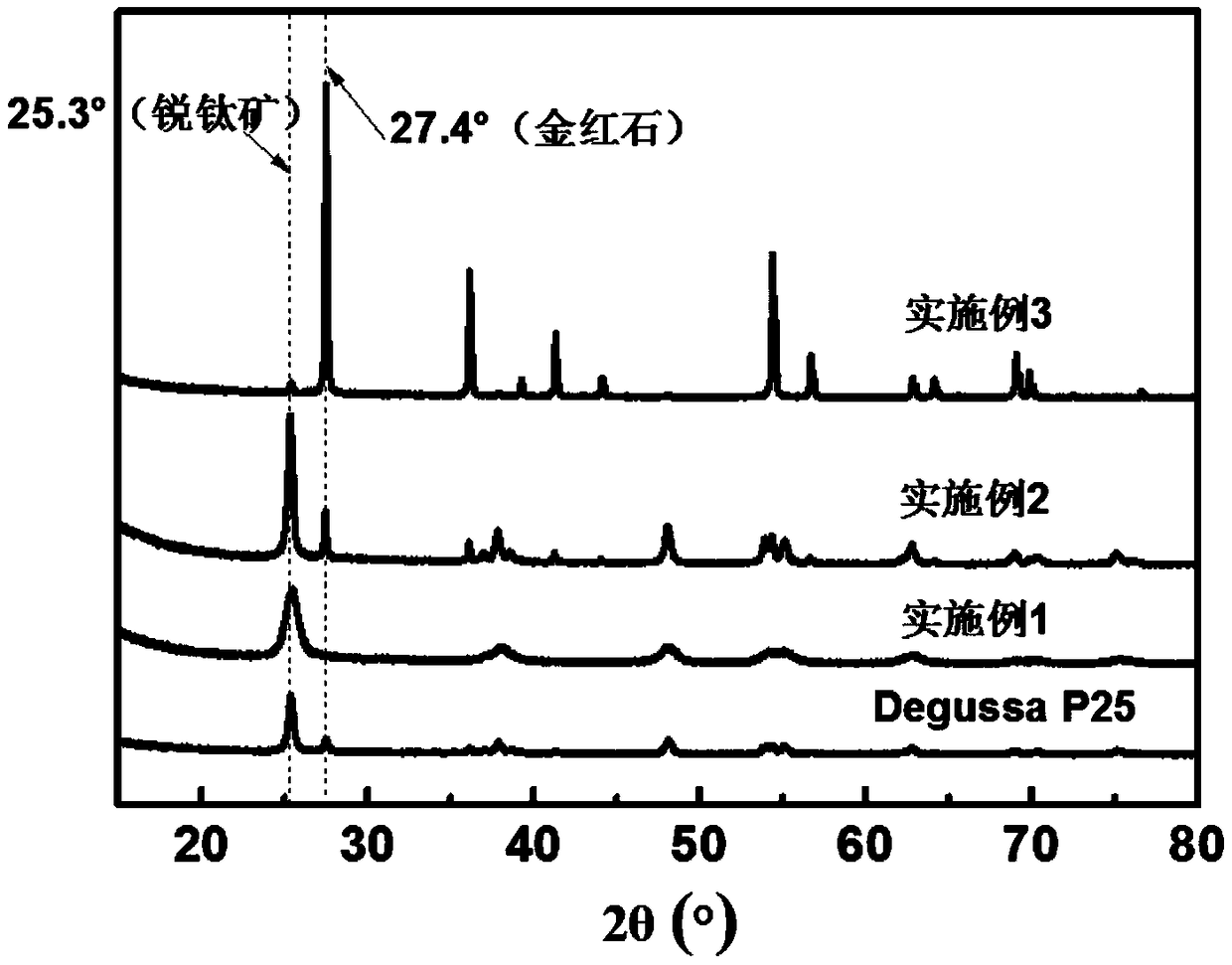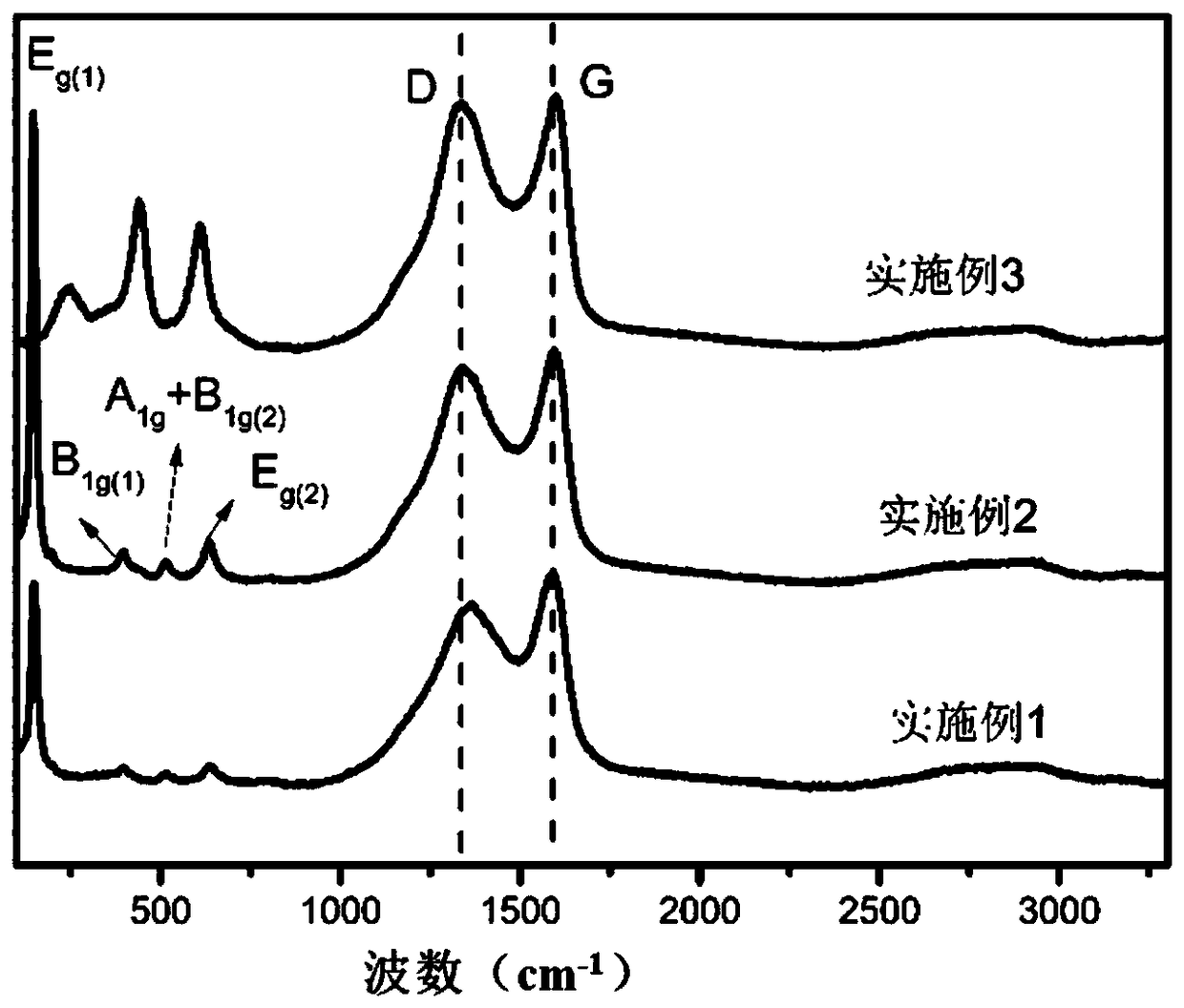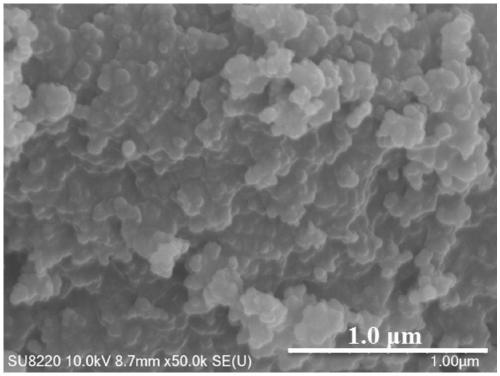Lignin carbon/nano titanium dioxide composite photocatalyst as well as preparation method and application thereof
A technology of nano-titanium dioxide and lignin carbon, which is applied in the direction of physical/chemical process catalysts, chemical instruments and methods, and water treatment of special compounds. It can solve problems such as uneven distribution, restricted development, and large particles of titanium dioxide. Improvement of photocatalytic efficiency and effect of small particle size
- Summary
- Abstract
- Description
- Claims
- Application Information
AI Technical Summary
Problems solved by technology
Method used
Image
Examples
Embodiment 1
[0062] Prepare 2g / L lignosulfonate solution and 2g / L C 14 TAB solution, mix C with a volume ratio of 2:10 14 The TAB solution is added to the lignosulfonate solution, and the precipitate is separated and dried to obtain a lignin complex. Dissolve 1.0 parts by volume of butyl titanate in 9 parts by volume of ethanol, add 1.0 parts by mass of lignin compound, stir evenly, then slowly add dropwise to 30 parts by volume of water with a pH of 5, and stir at room temperature for 40 minutes. The composite solution was centrifuged, washed twice with distilled water, and dried at 80° C. for 4 h. The obtained solid was ground into a powder, and then 2 Calcined at 500° C. for 2 h under protection, and cooled to room temperature to obtain a lignin carbon / nano-titanium dioxide composite photocatalyst.
Embodiment 2
[0064] Prepare 2g / L lignosulfonate solution and 2g / L C 14 TAB solution, mix C with a volume ratio of 2:10 14 The TAB solution is added to the lignosulfonate solution, and the precipitate is separated and dried to obtain a lignin complex. Dissolve 1.0 parts by volume of butyl titanate in 9 parts by volume of ethanol, add 0.5 parts by mass of lignin compound, stir evenly, then slowly add dropwise to 30 parts by volume of water with a pH of 5, and stir at room temperature for 40 minutes. The composite solution was centrifuged, washed twice with distilled water, and dried at 80° C. for 4 h. The obtained solid was ground into a powder, and then 2 Calcined at 600° C. for 2 h under protection, and cooled to room temperature to obtain a lignin carbon / nano-titanium dioxide composite photocatalyst.
Embodiment 3
[0066] Prepare 3g / L lignosulfonate solution and 3g / L C 14 TAB solution, mix C with a volume ratio of 3:10 14The TAB solution is added to the lignosulfonate solution, and the precipitate is separated and dried to obtain a lignin complex. Dissolve 1.0 parts by volume of butyl titanate in 9 parts by volume of ethanol, add 0.5 parts by mass of lignin compound, stir evenly, then slowly drop into 30 parts by volume of water with a pH of 5, and stir at room temperature for 40 minutes. The composite solution was centrifuged, washed twice with distilled water, and dried at 80° C. for 4 h. The obtained solid was ground into a powder, and then 2 Calcined at 700° C. for 2 h under protection, and cooled to room temperature to obtain a lignin carbon / nano-titanium dioxide composite photocatalyst.
PUM
 Login to View More
Login to View More Abstract
Description
Claims
Application Information
 Login to View More
Login to View More - R&D
- Intellectual Property
- Life Sciences
- Materials
- Tech Scout
- Unparalleled Data Quality
- Higher Quality Content
- 60% Fewer Hallucinations
Browse by: Latest US Patents, China's latest patents, Technical Efficacy Thesaurus, Application Domain, Technology Topic, Popular Technical Reports.
© 2025 PatSnap. All rights reserved.Legal|Privacy policy|Modern Slavery Act Transparency Statement|Sitemap|About US| Contact US: help@patsnap.com



